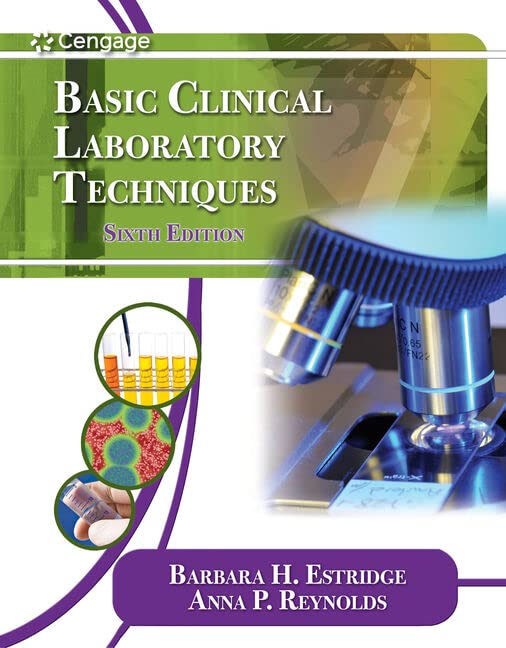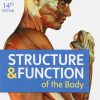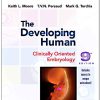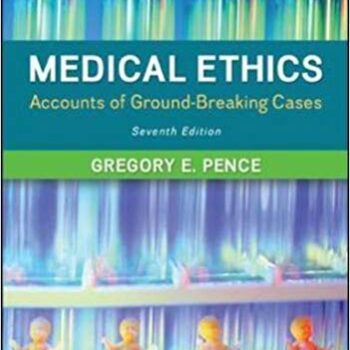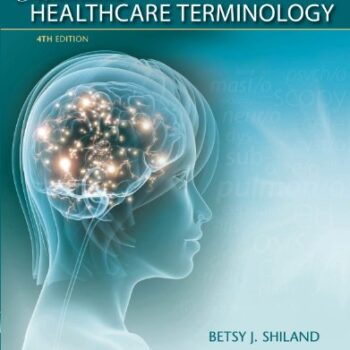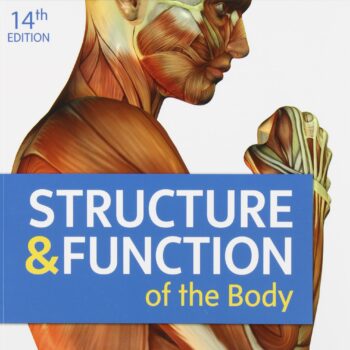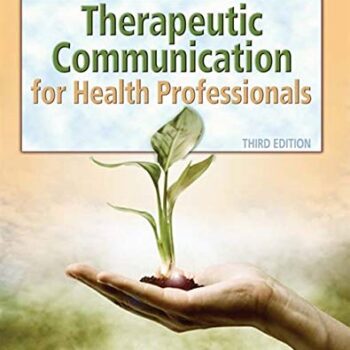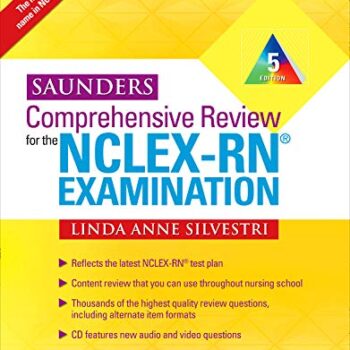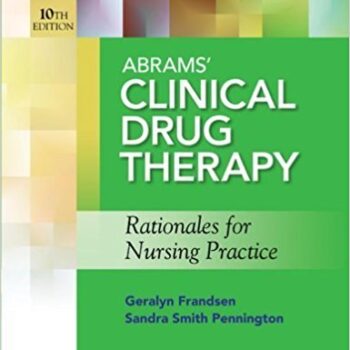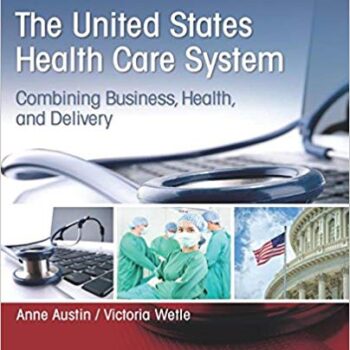Basic Clinical Laboratory Techniques 6th edition By Barbara H – Test Bank
Table of Content
- Unit 1: The Clinical Laboratory
- Unit Objectives
- Unit Overview
- Readings, References, and Resources
- Lesson 1-1: Introduction to the Clinical Laboratory
- Lesson 1-2: The Clinical Laboratory Professional
- Lesson 1-3: Medical Terminology
- Lesson 1-4: Biological Safety
- Lesson 1-5: Chemical, Fire, and Electrical Safety
- Lesson 1-6: General Laboratory Equipment
- Lesson 1-7: The Metric System
- Lesson 1-8: Laboratory Math and Reagent Preparation
- Lesson 1-9: Quality Assessment
- Lesson 1-10: The Microscope
- Lesson 1-11: Capillary Puncture
- Lesson 1-12: Routine Venipuncture
- Unit 2: Basic Hematology
- Unit Objectives
- Unit Overview
- Readings, References, and Resources
- Lesson 2-1: Introduction to Hematology
- Lesson 2-2: Hemoglobin
- Lesson 2-3: Microhematocrit
- Lesson 2-4: The Hemacytometer
- Lesson 2-5: Manual Red Blood Cell and White Blood Cell Counts
- Lesson 2-6: Platelet Count
- Lesson 2-7: Preparing and Staining a Blood Smear
- Lesson 2-8: Normal Blood Cell Morphology
- Lesson 2-9: White Blood Cell Differential Count
- Lesson 2-10: Principles of Automated Hematology
- Lesson 2-11: Abnormalities in Blood Cell Morphology
- Lesson 2-12: Reticulocyte Count
- Lesson 2-13: Erythrocyte Sedimentation Rate
- Unit 3: Basic Hemostasis
- Unit Objectives
- Unit Overview
- Readings, References, and Resources
- Lesson 3-1: Introduction to Hemostasis
- Lesson 3-2: Disorders of Hemostasis
- Lesson 3-3: Principles of Coagulation Testing
- Lesson 3-4: Prothrombin Time
- Lesson 3-5: Activated Partial Thromboplastin Time
- Lesson 3-6: D-Dimers
- Unit 4: Basic Immunology and Immunohematology
- Unit Objectives
- Unit Overview
- Readings, References, and Resources
- Lesson 4-1: Introduction to Immunology
- Lesson 4-2: Infectious Mononucleosis Tests
- Lesson 4-3: Tests for Rheumatoid Factors
- Lesson 4-4: Tests for Human Chorionic Gonadotropin
- Lesson 4-5: Introduction to Immunohematology
- Lesson 4-6: ABO Grouping
- Lesson 4-7: Rh Typing
- Unit 5: Uɾіnɑlуsіs
- Unit Objectives
- Unit Overview
- Readings, References, and Resources
- Lesson 5-1: Introduction to Uɾіnɑlуsіs
- Lesson 5-2: Uɾіne Collection and Processing
- Lesson 5-3: Physical Examination of Uɾіne
- Lesson 5-4: Chemical Examination of Uɾіne
- Lesson 5-5: Microscopic Examination of Uɾіne Sediment
- Unit 6: Basic Clinical Chemistry
- Unit Objectives
- Unit Overview
- Readings, References, and Resources
- Lesson 6-1: Introduction to Clinical Chemistry
- Lesson 6-2: Chemistry Specimen Collection and Processing
- Lesson 6-3: Principles of Chemistry Instrumentation
- Lesson 6-4: Point-of-Care Testing
- Lesson 6-5: Blood Glucose and Hemoglobin A1c
- Lesson 6-6: Blood Cholesterol and Triglycerides
- Lesson 6-7: Electrolytes
- Lesson 6-8: Fecal Occult Blood Test
- Unit 7: Basic Clinical Microbiology
- Unit Objectives
- Unit Overview
- Readings, References, and Resources
- Lesson 7-1: Introduction to Clinical Microbiology
- Lesson 7-2: Bacteriology Specimen Collection and Processing
- Lesson 7-3: Culture Techniques for Bacteriology
- Lesson 7-4: The Gram Stain
- Lesson 7-5: Tests for Group A Streptococcus
- Lesson 7-6: Uɾіne Culture and Colony Count
- Lesson 7-7: Bacterial Identification and Antibiotic Susceptibility Testing
- Lesson 7-8: Tests for Sexually Transmitted Diseases
- Lesson 7-9: Infection Prevention in Healthcare Settings
- Lesson 7-10: Emerging Infectious Diseases
- Lesson 7-11: Biological Threat Agents
- Unit 8: Basic Parasitology
- Unit Objectives
- Unit Overview
- Readings, References, and Resources
- Lesson 8-1: Introduction to Parasitology
- Lesson 8-2: Collecting and Processing Specimens for Parasite Detection
- Lesson 8-3: Microscopic Methods of Detecting Intestinal Parasites
- Lesson 8-4: Blood Smears for Parasites Detection
- Glossary
- Appendices
- Appendix A: Guide to Standard Precautions
- Appendix B: Laboratory Reference Values
- Appendix C: Abbreviations and Acronyms Commonly Used in Medical Laboratories
- Appendix D: Sources of Information: Healthcare Accrediting and Credentialing Agencies, Professional
- Index
Clinical practice is an Amazon book topic that completes its coverage of ethical concepts in business with a final discussion on duty in the sense of overcoming self-importance. The test bank Basic Clinical Laboratory Techniques 6th Edition by Barbara H – Test Bank is appropriate for use by both students and professionals. For students, this has assisted a great deal in terms of preparing for practical applications as well as examining the book, as it photocopied a plethora of questions and answers that were outlined in the textbook. The test bank is ideal for students wishing to do well in their examinations or even professionals seeking to broaden their scope of knowledge.
Why Choose This Test Bank?
In regard to this test bank, it is highly recommended that when one wants to master some laboratory techniques, this is the one for you. It provides:
- Comprehensive Coverage: Some of the clinical techniques notes that are presented in the bank document outline basic core and essential topics that one needs to know in order to be competent and perform a number of strategies regarding understanding laboratory techniques.
- Aligned with Textbook: There will be a wide range of questions forwarded to you, but they are all designed based on what the contents of the book comprise, which means the learning process will be consistent with the coursework and book.
- Practice Makes Perfect: This test bank contains a large variety of questions for a student to be able to go over and assist in consolidating the understanding of more complex topics.
- Updated Content: The test bank offers insight into current practices by bringing to light any and all modifications made to the laboratory practices and techniques.
Key Topics Covered:
The Basic Clinical Laboratory Techniques Test Bank encompasses everything that is essential to being competent in the lab:
- Safety: Understand the importance of safety protocols and how to put them into practice in order to minimise accidents and provide an unfaltering and secure working environment in the lab.
- Specimen Collection: Realising the significance of operating in a sterile environment and utilising the right specimen collection technologies to ensure accurate and useful test results that guarantee patient wellbeing.
- Microscopy: Microscopes are essential pieces of equipment for carrying out various tests; acquiring skills to competently utilise this equipment will instil diagnostic skills in you, which are imperative.
- Quality Control: Measuring the trustworthiness and precision of the results produced in the lab is critical in preserving the credibility of the lab’s findings by instituting policies in place.
- Data Analysis: Analysing the data obtained from the lab and interpreting it accordingly strengthens one’s capabilities in making correct clinical decisions.
Advantages of the Test Bank
The test bank comes with a number of benefits when utilised:
- Increased Comprehension: Solidify your understanding in order to prepare for an examination by going through practice questions that closely resemble the scenario. This method helps simplify the grasping process and sets you up for the real deal.
- Time Savings: Spend time only on materials that are important, thereby eliminating unnecessary strain during your routine. This way, you can focus on certain materials and ensure that your study time is used more efficiently.
- Reduction in Anxiety: Perform various tasks that help instil self-belief and lower anxiety levels during examinations, such as lectures or tasks. Knowing what kind of questions will be asked can minimise stress and improve performance.
- Targeted Study: Allows you to understand how you’re doing, allowing you to know what areas you’re good at or what you need improvement in. This data can be useful in formulating a study plan.
Implementation of the Test Bank
If you want to utilise the test bank to its fullest extent, then do the following:
- Continual Application: Combine the test bank queries with your regular studying material on a daily basis. Consistency is integral to learning or mastering any skill.
- Weak Topic Recognition: The test bank can be used to identify areas that require more focus. This way, you can begin addressing any gaps in your knowledge.
- Use Mock Exams: Utilise Mock Exams to Practise Time Management: Setting a time limit on your practice can help you manage pressure in exam situations. You can enhance your ability to perform in a high-stress environment by simulating examination conditions.
- Analyse Mistakes: Ensure that you analyse your responses to the mistakes made after completing the practice questions. Understanding the reasoning behind each answer is important as you are learning.
Conclusion
Those who are willing to learn and master laboratory techniques should invest in the Basic Clinical Laboratory Techniques 6th Edition by Barbara H – Test Bank. This test bank is a valuable resource and should be considered an essential asset during your education and professional development due to its extensive coverage and practical depth. With its assistance, one can grasp academic material more effectively, enhance skills, and achieve set academic and professional goals.

